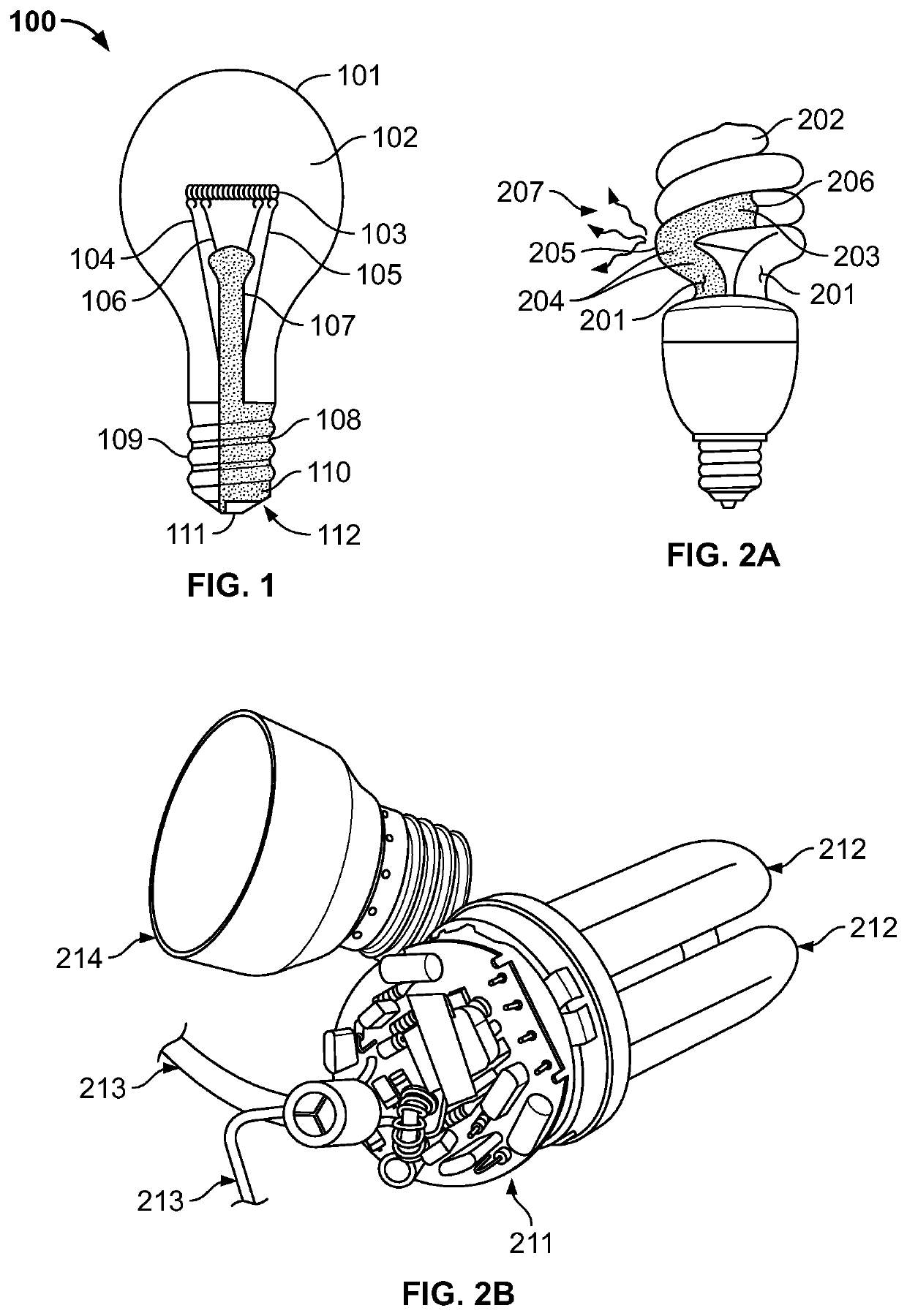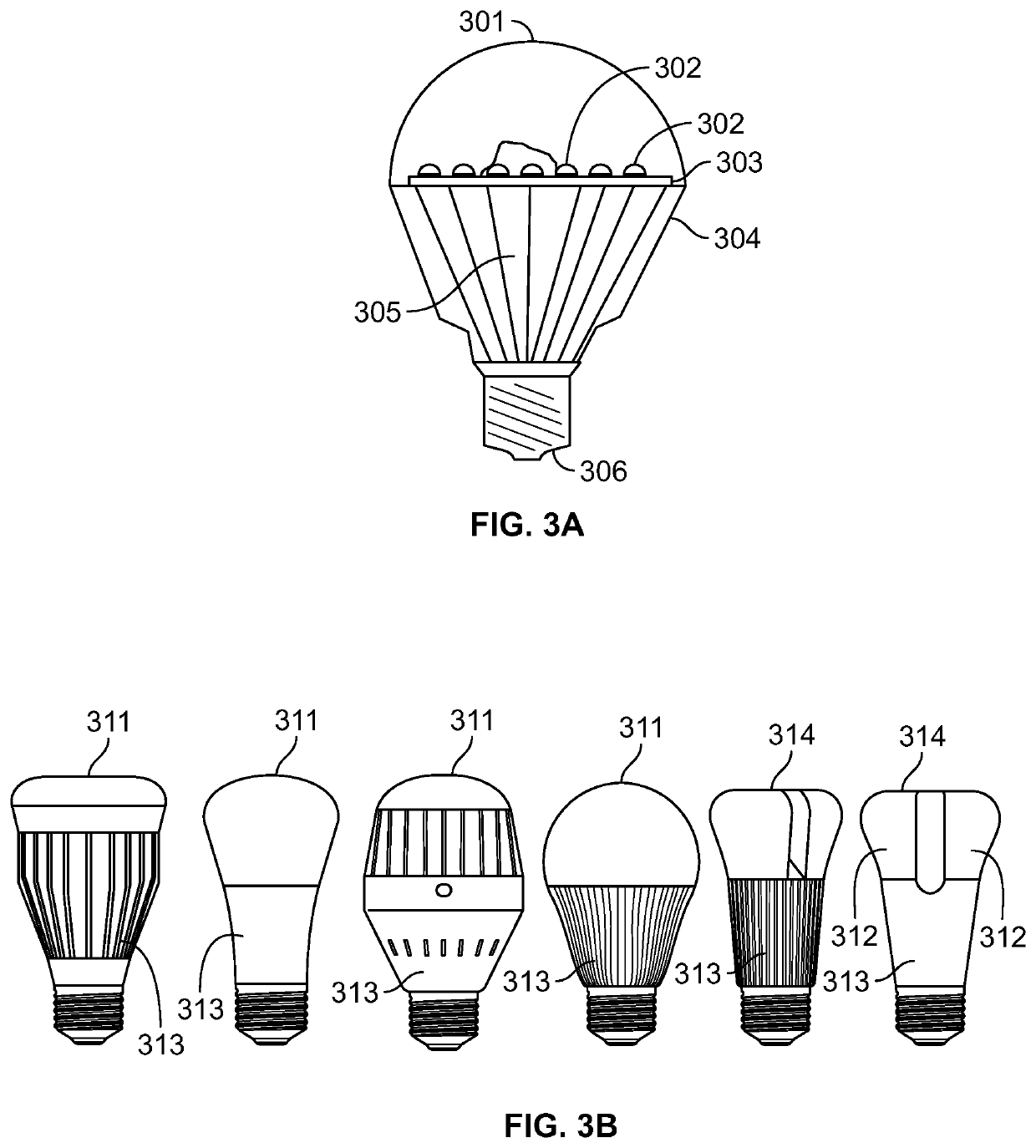LED light bulb construction and manufacture
a technology of led light bulbs and construction, applied in the direction of point-like light sources, semiconductor devices of light sources, light and heating apparatus, etc., can solve the problems of increasing electricity prices in industrialized nations, increasing electricity demand and fossil fuel consumption, and system incurring higher generation costs, so as to increase the lifetime, widespread availability and cost effectiveness of wireless technology
- Summary
- Abstract
- Description
- Claims
- Application Information
AI Technical Summary
Benefits of technology
Problems solved by technology
Method used
Image
Examples
Embodiment Construction
[0034]To provide an overall understanding of the innovative aspects of the subject matter, certain illustrative embodiments are described; however, one of ordinary skill in the art would understand that the embodiments described herein may be adapted and modified as is appropriate for the specific application being addressed, and that alternative implementations may be employed to better serve other specific applications, and that such additions and modifications will not depart from the overall scope hereof.
[0035]In the following detailed description, terminology had been adopted to describe aspects of the disclosure. Since this disclosure defines a new class of lighting product, some new terms and phrases have been defined, such that a consistent nomenclature is used throughout this description. Other descriptive terms and phrases are used to convey a generally agreed upon meaning to those of ordinary skill in the art, unless a different definition is given in this specification. ...
PUM
 Login to View More
Login to View More Abstract
Description
Claims
Application Information
 Login to View More
Login to View More - R&D
- Intellectual Property
- Life Sciences
- Materials
- Tech Scout
- Unparalleled Data Quality
- Higher Quality Content
- 60% Fewer Hallucinations
Browse by: Latest US Patents, China's latest patents, Technical Efficacy Thesaurus, Application Domain, Technology Topic, Popular Technical Reports.
© 2025 PatSnap. All rights reserved.Legal|Privacy policy|Modern Slavery Act Transparency Statement|Sitemap|About US| Contact US: help@patsnap.com



